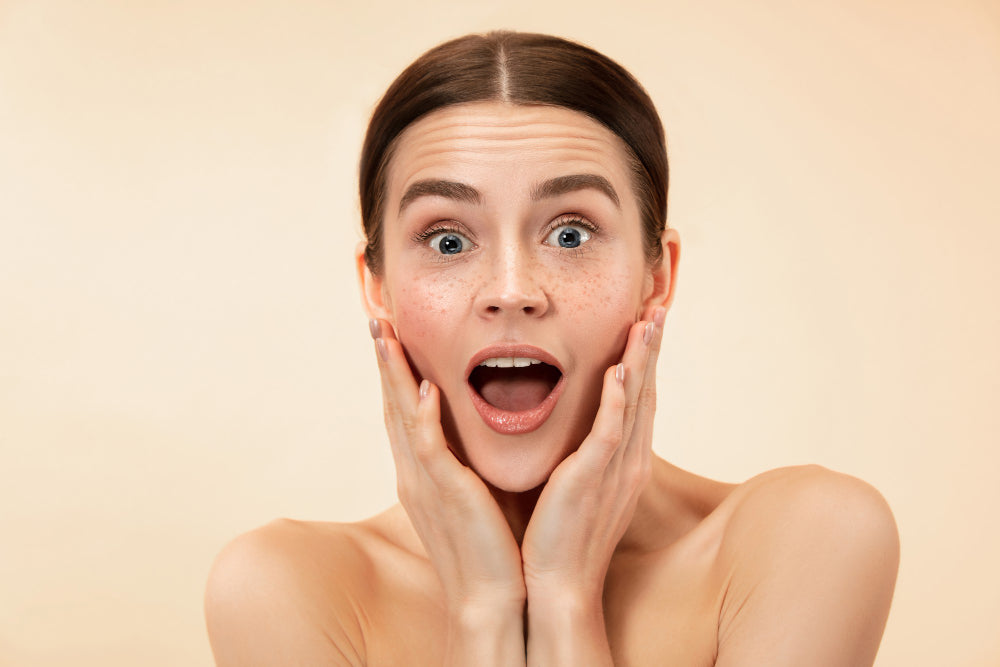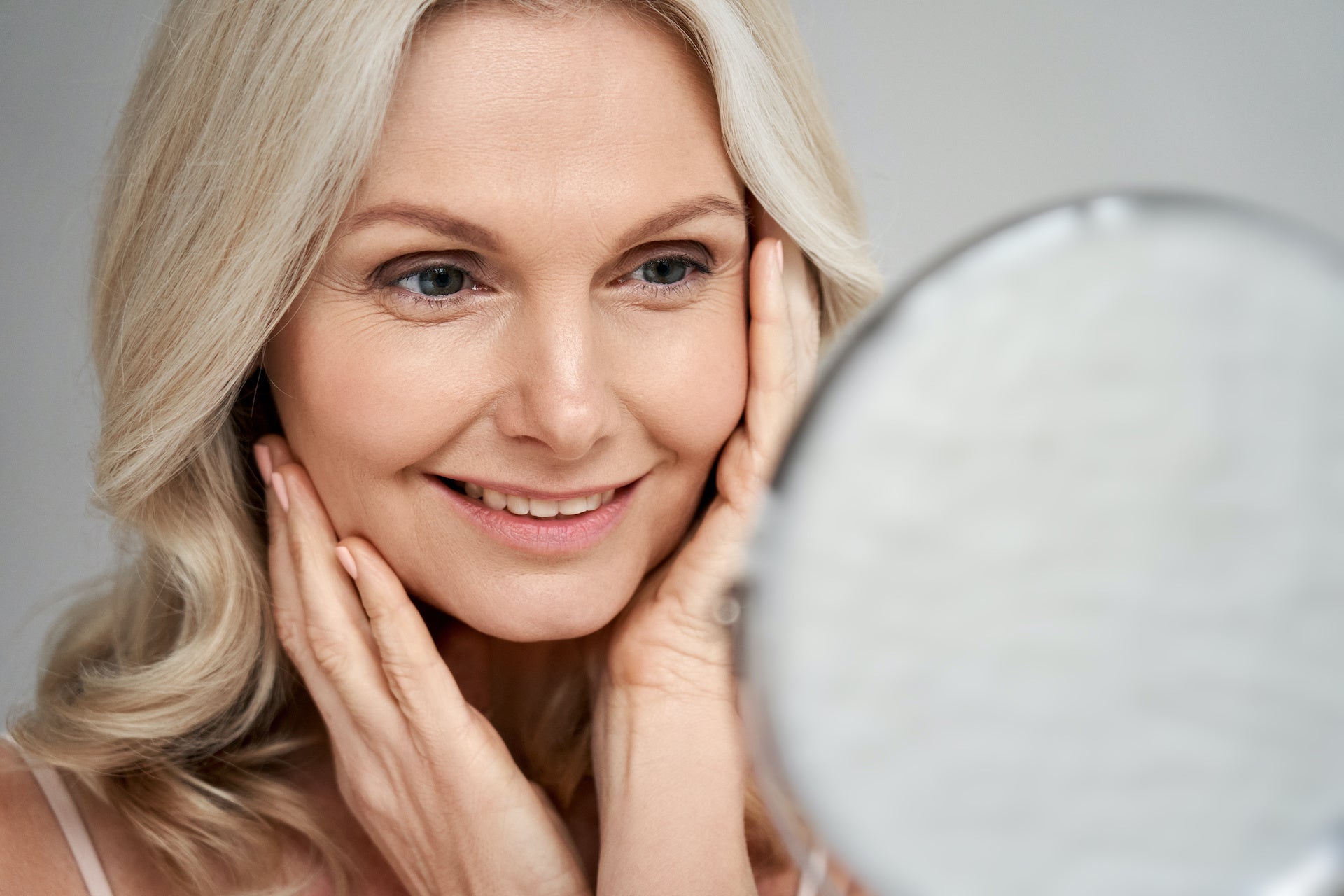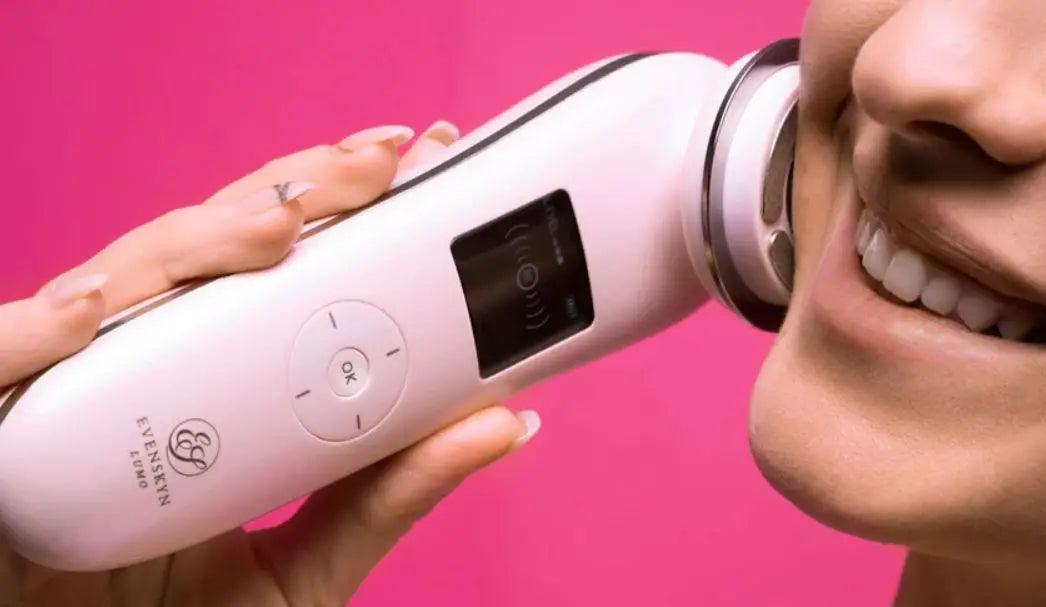Medically Reviewed by Dr. Lisa Hartford, MD
The desire to have firm and radiant skin has been a goal in the field of beauty and health. And the market is full of skincare products promising skin-firming benefits. However, the recent developments in the dermatological department have brought mechanical stimulation and skin tension to the limelight. It is suggested that they provide significantly tighter and firmer skin.
Read further to know about the science behind skin firming. Explore how mechanical stimulation, combined with natural biological processes, can lead to excellent developments in skin elasticity and overall appearance.
The skin's anatomy and function

Before jumping into the minutes of skin firming, it is important that you have a grasp of your skin's anatomy and functioning. Because the skin is the largest organ of the body, its functions are no less important, from serving as a protective barrier against all sorts of external barriers to preventing excess fluid loss. The skin consists of three layers, namely, the epidermis, dermis, and hypodermis.
Epidermis
The epidermis is the outermost layer. It provides waterproofing and protects against harmful microorganisms. When you study deeper into the topic, you get to know that this layer is further divided into five layers on thick skin areas like the palm and soles. They are named as stratum basale, stratum granulosum, stratum spinosum, stratum corneum, and stratum lucidum. However, in other places, the epidermis has four layers without stratum lucidum.
Dermis
The dermis is the second layer located below the epidermis. It is this layer that contains collagen, elastin, and other proteins that provide strength and elasticity to the skin. This layer is also divided into two more layers, namely, the papillary dermis and the reticular dermis.
Hypodermis
Hypodermis, also called superficial fascia, is the last layer. It is composed of fat cells (adipocytes) and behaves as an energy store and insulation for the body. These adipose tissues protect the internal organs from external shocks. This layer acts as a thermal insulator and helps in regulating body temperature.
Functions of the skin
The skin is a multifunctional organ that plays a wide variety of roles to contribute to the overall health of the body. Some key functions include protection, thermoregulation, sensation, production of vitamin D, etc.
Skin is the primary layer that acts as a shield to protect the body from external dangers such as bacteria, viruses, and other harmful materials. It also helps in regulating body temperature by the process of perspiration. The sweat glands release extra heat, and this cools down the body.
The vast number of nerve endings present on the skin are sensitive to touch. These receptors on the skin allow us to perceive and respond to external environmental touches. The skin also contains numerous specialized immune cells that protect the body against infection.
The building blocks of skin firming
Skin aging starts the moment we are born. There are two different types of skin changes that occur over time, namely, chronological aging, which occurs due to time, and photoaging, which happens due to chronic sun exposure. To keep the skin from sagging and losing elasticity, there are two critical proteins, collagen, and elastin, responsible for maintaining skin firmness.
Collagen provides structural support and keeps the skin supple. On the other hand, elastin lets the skin return back to its original shape after getting stretched or compressed. However, the skin loses its firmness when the production of collagen and elastin slows down. This promotes the formation of wrinkles and fine lines.
Understanding Mechanical stimulation and skin firming
Mechanical stimulation, otherwise called mechanical skin firming, refers to the application of energy to tissues or cells in the body. The purpose of this force or energy is to promote tissue repair and trigger natural healing processes. This feature has made mechanical stimulation a valuable approach in medicine, sports science, tissue engineering, and biomechanics.

Mechanical skin firming is widely used in the dermatology field for the purpose of achieving skin firmness without the need for surgery. The principle behind the process is to utilize physical force or energy to advance collagen and elastin production in the skin. In return, the skin laxity or sagging are addressed and are led to improved firmness and elasticity.
Working of mechanical stimulation
Skin firming, with the help of mechanical stimulation, works on the principle of controlled injury and wound healing. Mechanical stimulation promotes the production of collagen and elastin via controlled micro-injuries. This increase in protein synthesis leads to the repair of the damaged areas. The freshly produced collagen fibers add structure and strength to the skin. On the other hand, elastin ensures that the skin returns to its original form after stretching. The skin is now firmer and more resilient.
Types of mechanical stimulation
Mechanical stimulation for skin firming has various non-invasive and invasive techniques. Each method approaches specific layers of the skin, stimulating a wound-healing response. Let's explore the types of mechanical stimulation used for skin firming:
Microdermabrasion
It is a non-invasive technique used to eliminate the outer coating of dead skin cells to stimulate blood flow and lymphatic drainage. This promotes collagen production and renews skin cells. With overtime healing, the skin becomes firmer and smoother. The technique can be used for almost all skin types and repeated at regular intervals for better results.
Microneedling
It is a minimally invasive procedure where a device uses tiny needles to induce controlled micro-injuries. These injuries promote a wound-healing response and stimulate the production of collagen and elastin. Therefore, the repair starts, and the skin is even firmer and smoother than before. This treatment is useful for fine lines, acne scars, wrinkles, etc.
Radiofrequency therapy
RF therapy utilizes radiofrequency energy to heat the deep skin layer of the skin without harming the outer layer. The controlled heating pattern promotes wound-healing response and stimulates the production of collagen and elastin. Thus, improving skin firmness. You will be relieved to know that this technique is used on the face, neck, and body. EvenSkyn Lumo: Premium Anti-Aging & Skin Tightening Handset is the perfect device to conduct RF therapy.

Mechanical massages
For this technique, special devices or hand techniques are used to increase blood circulation and stimulate skin fibroblasts. The reason behind using these techniques is that it promotes collagen and elastin production.
Light therapy
LED light therapy is utilized to promote collagen production because it uses specific wavelengths to stimulate cellular activity. Red LED light is used particularly to improve skin firmness and reduce wrinkles.
It is essential to note that the effectiveness of each mechanical stimulation method may vary based on individual skin concerns, age, and lifestyle factors. Additionally, some treatments may require different sessions to achieve optimal results. Consulting with a qualified dermatologist or skincare specialist can help determine the most suitable mechanical stimulation approach for specific skin-firming goals and ensure safe and effective outcomes.
Benefits of mechanical stimulation for skin firming
Mechanical skin firming procedures provide various benefits over invasive methods. Some of the methods are mentioned below:
Minimal surgery
Mechanical stimulation procedures require no surgery or minimal surgical incisions, for example, in micro needling. This reduces any risk of complications and minimizes downtime.
Natural results and no discomfort
The induced production of collagen and elastin via mechanical stimulation allows the skin to improve naturally. The skin tightens over time, and the texture improves gradually with minimum discomfort.
Quick recovery
Patients can continue their activities right after the procedure. Also, these procedures have long-lasting effects as collagen and elastin keep on producing for a long time.
Key ingredients to boost skin firmness
Mechanical stimulation does help in achieving skin firmness; there are various key ingredients that might help in enhancing the procedure even further:
Retinoids, derived from vitamin A, boost collagen production and help in reducing wrinkles. Peptides are also such protein fragments essential for collagen production. If you are looking to prevent premature aging and protect the skin from free radicals, incorporate antioxidant-rich products. Hyaluronic acid, one of the essential key ingredients, helps in keeping the skin hydrated, plump, and supple.
Scientific evidence for the success of mechanical stimulation
The primary aim of a study conducted for twenty-four sessions over eight weeks was to assess the effects of mechanical stimulation on the facial skin. The secondary aim was to study the action of the technique on a cellular level.
Thirty healthy subjects were part of the study. All the subjects had mild to moderate sagging facial skin. The subjects were asked to maintain a good skincare regime to avoid any complications. Regular pictures were taken, and it was found that the skin was firmer and smoother after the study was complete.
Final words
It is evident that to have firm skin, you are required to have an effective production of collagen and elastin. To stimulate collagen and elastin production, mechanical stimulation is one of the best non-invasive techniques. However, it is essential to remember that the results might vary depending on the cellular activity and synthesis of essential proteins, i.e., collagen and elastin, to achieve firmer skin.
References
Eastwood M, MacGrouther DA, Brown RA. Fibroblasts responses to mechanical forces.
Lopez-Ojeda W, Pandey A, Alhajj M, et al. Anatomy, Skin (Integument) 2022 Oct 17.
Lim K. M. Skin Epidermis and Barrier Function. 2021.
Binic, I., Lazarevic, V., Ljubenovic, M., Mojsa, J., & Sokolovic, D. “Skin ageing: natural weapons and strategies. Evidence-based complementary and alternative medicine.” 2013.
Bolke L, Schlippe G, Gerß J, Voss W. A Collagen Supplement Improves Skin Hydration, Elasticity, Roughness, and Density: Results of a Randomized, Placebo-Controlled, Blind Study. Nutrients. 2019 Oct 17.
Philippe Humbert, Ferial Fanian, Thomas Lihoreau, Adeline Jeudy, Ahmed Elkhyat, Sophie Robin, Carol Courderot-Masuyer, Hélène Tauzin, Christine Lafforgue & Marek Haftek. Mécano-Stimulation of the skin improves sagging score and induces beneficial functional modification of the fibroblasts: clinical, biological, and histological evaluations. 2015.









Leave a comment
All comments are moderated before being published.
This site is protected by hCaptcha and the hCaptcha Privacy Policy and Terms of Service apply.